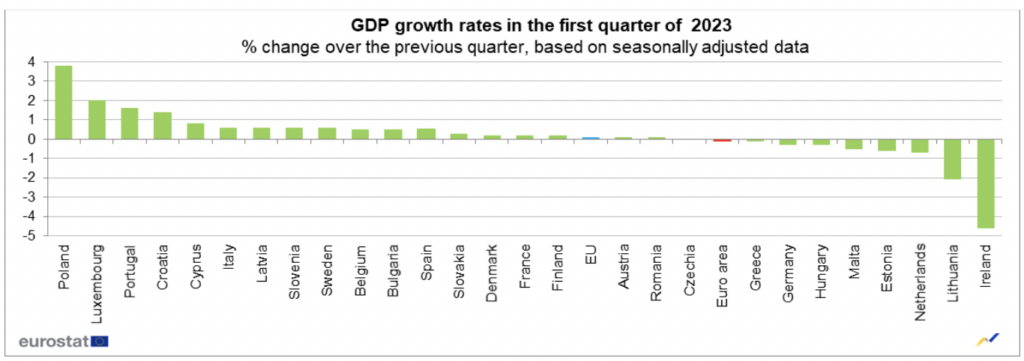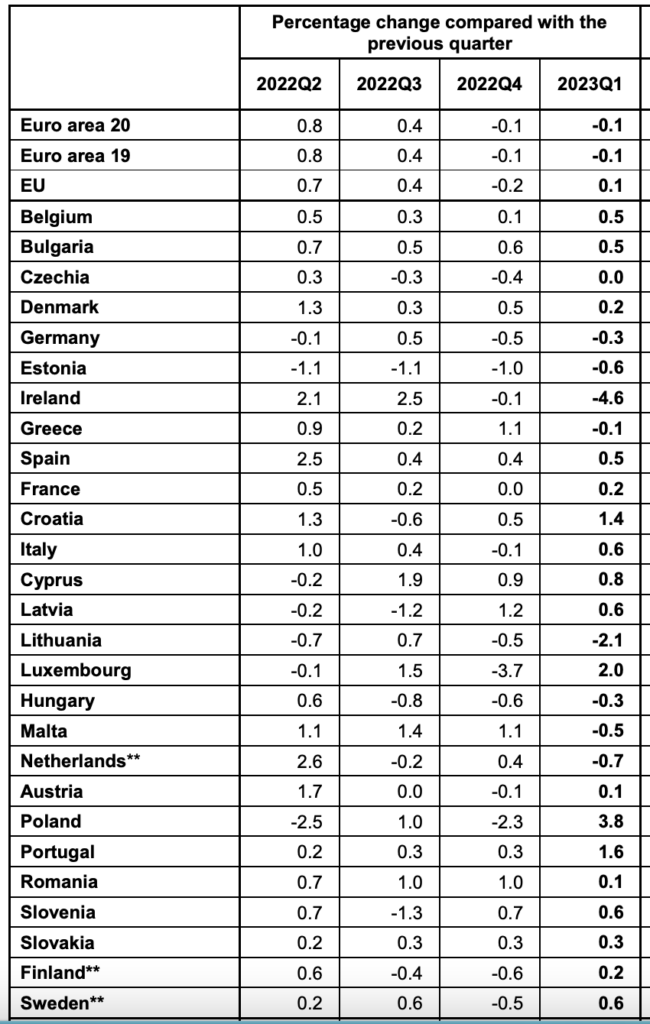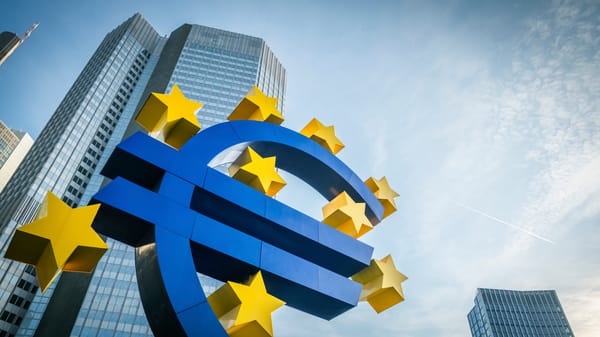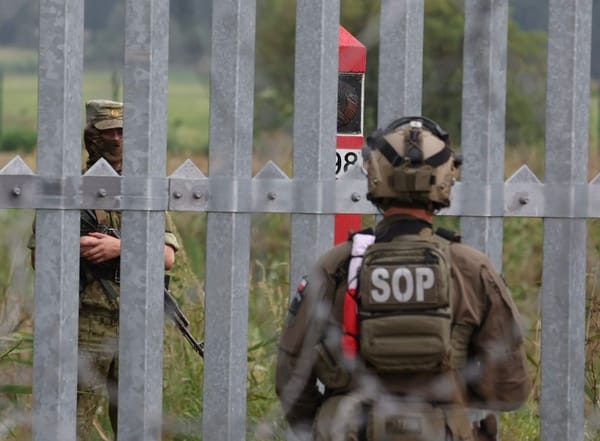
Poland EU's best performing economy in Q1
Poland outstretched all of its EU peers for growth in the first quarter of 2023, the bloc’s official statistics office Eurostat reported in its revised data.
In Central and Eastern Europe (CEE) – and Europe as a whole – Poland had the highest growth rate of 3.8%, ahead of Croatia with 1.4%, followed by Latvia (0.6%) and Bulgaria (0.5%). Other CEE countries that registered growth in the year’s first quarter were Slovenia (0.3%), and Austria and Romania (both 0.1%, equal to the EU average).
Czechia registered zero growth, just ahead of the Eurozone average (-0.1%). A total of three CEE countries saw their economies shrink in Q1 2023, Hungary (-0.3%), Estonia (-0.6%) and Lithuania (-2.1%). No growth has been reported in Lithuania since 2021.

Meanwhile, in its latest report, the World Bank upheld its forecast for Poland’s economic growth in 2023 at 0.7%. The World Bank also predicted Poland’s GDP to grow by 2.6% in 2024 and 3.2% in 2025.
“What once seemed like a fairy tale, that we will catch up with the West, these rich countries, is now within reach,” Law and Justice (PiS) party president Jaroslaw Kaczynski claimed in a speech at the weekend in Pilzno in Podkarpacie.
He made no mention of inflation or skyrocketing prices, Polish daily Gazeta Wyborcza commented.
Despite all these terrible crises, despite the war, Poland is still moving forward and this year, although it was supposed to be very weak, it seems that it will not be so weak at all. It can be really good already, not to mention the years to come and beyond, he said in a speech.
“What once seemed like a fairy tale that we would catch up with the West, these rich countries – today is within reach. It’s within reach for us to overtake Spain, Italy, and then England, France. Then the richest countries, starting with Finland. And then there are Germany and the richest ones – the Netherlands, Denmark, Austria. It is absolutely achievable,” he said.

Meanwhile, the Eurozone entered a technical recession as its economy shrank by 0.1% for a second consecutive quarter.
Eurostat revised down its earlier forecast, which had predicted a slight growth, due to Germany’s recent announcement of falling into a recession.
The figures turned out worse than expected, as energy costs, inflation and higher interest rates dampened demand in Europe’s largest economy.
Initially, Eurostat had projected a growth of 0.1% in the final quarter of 2022 and 0.2% in the first quarter of 2023. However, they have now revised these numbers to indicate contractions of 0.1% in both periods.
This situation arises after a challenging year for European economies, primarily caused by skyrocketing energy prices resulting from Russia’s conflict with Ukraine, leading to a surge in inflation.
In response, the European Central Bank has raised its key rates by 3.75 percentage points since commencing an unprecedented monetary tightening campaign in July of the previous year.
These latest figures raise doubts about more optimistic predictions for the entire year of 2023. The European Commission forecast in mid-May that growth across the 20 countries using the single currency would reach 1.1%.





